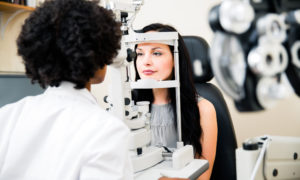
Dec. 8, 2021
Visus Therapeutics Inc., a clinical-stage pharmaceutical company focused on developing ophthalmic therapies to improve vision, reported positive topline results from VIVID, the company’s Phase 2 study of three novel topical ophthalmic formulations under investigation for the treatment of presbyopia.
All three investigational candidates studied in VIVID achieved the endpoint of three lines of improvement in binocular near visual acuity without losing one line of distance vision with a minimum responder rate of 83 percent at one hour. A minimum of 35 percent of subjects in the study met this same endpoint at nine hours in all three formulations. Additionally, all three formulations were well-tolerated and exhibited favorable safety profiles. Based on these positive outcomes, the company plans to commence Phase 3 pivotal trials shortly.
“We are very encouraged by the VIVID study topline clinical data, which demonstrate that our clinical
development program has delivered drug candidates which provide a durable improvement in visual
acuity with favorable tolerability and safety profiles,” said Rhett Schiffman, MD, MS, MHSA, co-founder, chief medical officer and head of research and development at Visus Therapeutics. “We know
that presbyopia has a profound impact on quality of life for patients. These positive results provide
further confidence that we are well positioned to bring to market the longest-lasting eye drop in the
presbyopia category, which would be a meaningful breakthrough treatment for these individuals. We
are excited to initiate our Phase 3 pivotal trials.”
VIVID Phase 2 Trial Topline Highlights:
• In the per protocol population, a minimum of 83 percent of subjects treated with BRIMOCHOL, BRIMOCHOL F or Carbachol F achieved the endpoint of three lines of improvement in binocular near visual acuity under mesopic conditions without losing one line of distance vision at one hour. A minimum of 82 percent, 52 percent and 35 percent of subjects met this same endpoint at three, seven and nine hours, respectively.
• In key secondary endpoints, BRIMOCHOL and BRIMOCHOL F achieved a mean improvement in binocular near visual acuity of a minimum of 18 ETDRS letters, almost four lines, as early as 30 minutes and a minimum of 12 letters at nine hours.
• BRIMOCHOL, BRIMOCHOL F and Carbachol F were well-tolerated with no unexpected adverse events. Adverse events exceeding 5 percent included temporary burning and stinging upon instillation, headache and brow ache. No serious adverse events were reported.
“The successful completion of the VIVID study marks an important milestone for Visus Therapeutics,” said Ben Bergo, co-founder and chief executive officer at Visus Therapeutics. “In light of the recent FDA approval of Allergan’s VUITY, the first pharmacologic approved for the treatment of presbyopia, it is truly exciting to see this category come to fruition. We are pleased the VIVID study data exceeded our expectations, demonstrating a clear opportunity to commercialize long-acting miotic formulations.”
The VIVID clinical trial (NCT04774237) was a double-masked, randomized, dose-ranging, multi-center, three-arm crossover study designed to evaluate the safety and efficacy of fixed-dose combinations of carbachol and brimonidine tartrate (BRIMOCHOL and BRIMOCHOL F) compared to a similarly formulated preservative-free carbachol. The trial enrolled 85 subjects, ages 45 to 80, with emmetropic phakic and pseudophakic presbyopia at three U.S. sites. The trial was not designed to achieve statistical significance in any of these study populations. Full results from the VIVID study will be presented at future medical meetings.
“These are very encouraging preliminary results for the millions of people living with presbyopia and the eyecare professionals who treat them,” said Eric D. Donnenfeld, MD, founding partner of Ophthalmic Consultants of Long Island and Clinical Professor of Ophthalmology at New York University. “Eye drops are emerging as an important new treatment option for correcting age-related loss of near vision. I see tremendous clinical value in a long-acting, preservative-free eye drop that can improve near vision throughout the workday while avoiding the potential toxicity of preservatives. What’s really exciting is that these study results demonstrate the potential of drug candidates that can be studied in a larger treatment population.”
Other Articles to Explore
“Currently, drugstore reading glasses are the most common treatment option for people as they lose their near vision with age. This means that many people aren’t getting regular comprehensive eye exams, and as such, more serious eye conditions are going undiagnosed,” said David Evans, OD, an optometrist at Total Eye Care in Memphis, Tenn., and a clinical investigator in the VIVID trial. “The availability of a once-daily, preservative-free eye drop, such as those evaluated in the VIVID study, could attract millions of people into eyecare practices nationwide, creating opportunities to not only improve visual performance but also advance eye health overall for this patient population.”



























